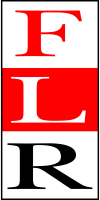Essential Home Insurance Riders for Added Protection
Nov 18 2025 16:09
Many homeowners believe their insurance covers everything, only to find surprising gaps during a claim. Often, the risks that can result in the highest expenses require additional protection. Known as home insurance riders, endorsements, or floaters, these can be crucial to avoid significant out-of-pocket costs when unexpected events occur.
With the increase in natural disasters and the aging of homes, considering these riders is more important than ever. Flooding is a factor in approximately 90% of all natural disasters in the U.S., building codes are becoming more stringent, and even minor tremors can lead to structural issues not covered by a standard policy. As high-value assets, home-based businesses, and remote work become more common, it’s wise to annually review your coverage as a financial safeguard.
Consider These Critical Riders
Here are several insurance riders you should consider:
1. Flood and Water Damage Coverage
Standard home insurance typically excludes flooding from external sources and non-instantaneous water damage. If flooding is a risk in your area, a standalone flood insurance policy is vital. Such insurance might also be mandatory in high-risk zones, but given the increase in flood severity, extended coverage is beneficial. A water-backup rider can protect against sewer or sump-pump issues and groundwater problems, providing further security.
The National Flood Insurance Program (NFIP) offers coverage averaging $899 per year, with $250,000 for structures and $100,000 for contents. Private insurers might offer higher limits or quicker payouts, essential for rebuilding in areas where costs exceed NFIP bounds. Since one in three flood claims arise outside high-risk zones, it’s critical to assess exposure irrespective of residing in a designated floodplain.
Water-backup endorsements, typically ranging from $50–$250 annually, offer $5,000–$25,000 in coverage for sewer or sump-pump backups. Insurers often differentiate between "surface flooding" and "water backup," so clarifying your policy’s definitions is essential. Installing backflow valves or battery-backup sump pumps might even earn a 5%–10% discount on your policy.
2. Earthquake and Seismic Coverage
Earthquake damage often isn’t covered unless specified. If you reside in an earthquake-prone region, having this coverage might be necessary. However, tremors can affect areas outside traditional risk zones, potentially damaging your home’s foundation or plumbing. A seismic rider can be an advantageous addition.
Most major carriers provide earthquake endorsements or standalone policies, especially in states like California, Washington, and Oregon. Deductibles range from 2%-20% of the home’s insured value, meaning substantial out-of-pocket costs, but these pale in comparison to potential foundation repairs. Many of these riders also cover emergency repairs and debris removal right after an event.
3. Building Ordinance or Law Coverage
If your home requires repairs or rebuilding, it must comply with current building codes. Even minor changes can lead to significant updates. Without this rider, you’d bear these costs. A building code endorsement helps cover these expenses, ensuring your home adheres to today’s standards.
Modern building codes evolve quickly, often influencing insulation, wiring, plumbing, HVAC systems, and the structural integrity of homes. Such upgrades can add 10%-20% to rebuilding costs, which a standard policy rarely covers. Ordinance or Law riders can offer 10%-50% of your dwelling's coverage limit, supporting code-mandated renovations. Even minor incidents, like a single-room fire, can necessitate updates throughout your home. It’s wise to check your policy for “increased cost of construction” coverage.
4. Scheduled Personal Property Coverage
Your homeowners policy might limit reimbursements for valuable items, such as jewelry, collectibles, and electronics. For high-value possessions, consider extra protection. A scheduled personal property rider allows you to list and insure items at their appraised worth.
Typical policies cap coverage at low limits for valuables (e.g., $1,500 per jewelry item). By scheduling items, you gain “all-risk” coverage, including theft and accidental loss. Expect premiums around $1-$2 per $100 of insured value. Keeping appraisals current ensures accurate value assessments, and many policies extend worldwide coverage while traveling. Maintaining a home inventory with photos and receipts facilitates smoother claims.
5. Home-Based Business Coverage
If you run a business from home, standard policies may fall short in protecting your business assets. A business property rider can cover inventory, equipment, and associated liabilities.
Standard homeowners policies often carry low limits for business property ($2,500 on-site, $500 off-site). A rider can increase these limits significantly, while a separate policy may add liability coverage if clients visit your home. Post-2020 revisions often require endorsements for remote employee equipment. Remember, business property riders don't replace professional liability insurance — consultants might need both.
Conclusion
Home insurance riders aren't simply "extras" — they offer critical protection from unforeseen expenses. As inflation, natural disasters, and building standards change, these endorsements align your coverage with real-world risks. Regularly reviewing your policy, especially after major life changes, helps ensure you’re adequately protected. Keeping digital documents and bundling policies can also help save on premiums.
If you want to explore your coverage options further, feel free to reach out at any time.
